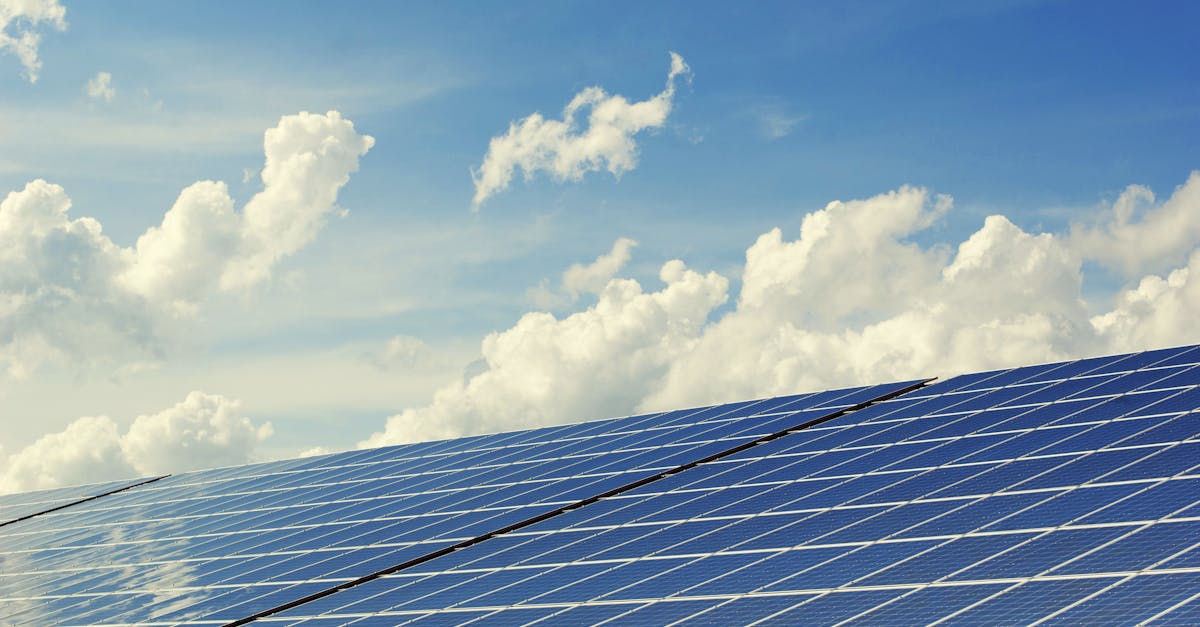Eco-Harmony: Orchestrating Sustainable Practices for a Greener Office Environment

Welcome to the sustainable office of the future, where every step taken is a stride towards a greener, more eco-friendly workspace. As the world shifts its focus towards sustainability, businesses are leading the charge by embracing practices that not only benefit the environment but also foster healthier and more productive work environments. In this article, we will delve into the various aspects of sustainable offices, exploring energy efficiency, waste management, green procurement, indoor air quality, and employee engagement, all working harmoniously towards a shared goal: creating a workspace that not only sustains but thrives in its environmental impact. From the glow of energy-efficient LED lights to the soothing presence of indoor plants, the journey to a greener workspace is an exciting, achievable adventure, and we’re here to guide you every step of the way.
1. Introduction: Embracing Sustainability in Office Spaces
Thank you for reading this post, don't forget to subscribe!
Welcome to a world where offices are not just workplaces but thriving ecosystems of sustainability. Creating a greener workspace has become a top priority for businesses worldwide, and it’s more than just a trend – it’s a responsibility we all share. Embracing sustainability in office spaces is not just about being eco-friendly; it’s about reshaping the way we work to benefit the planet and the people within it. From renewable energy sources to waste reduction initiatives, every step we take towards sustainability paves the way for a brighter, more sustainable future. This article is your guide to understanding, implementing, and celebrating sustainable practices that will transform your office into a hub of environmental harmony and productivity. Get ready to embark on a journey that doesn’t just change how your office looks, but how it feels and what it stands for. Together, we’re about to create something truly remarkable – a workspace where sustainability isn’t just a practice, it’s a way of life.
Understanding the Need for Sustainable Office Practices
In today’s fast-paced world, the need for sustainable office practices has never been more vital. As we witness the impact of climate change and the strains on our planet, there’s a growing recognition that our daily work environments play a significant role in this global challenge. Sustainable office practices are crucial because they not only reduce our carbon footprint but also demonstrate corporate responsibility. By embracing sustainable measures, we not only contribute to a healthier planet but also set an example for others to follow. The modern office environment, with its bustling activity and energy demands, presents a unique opportunity to make a positive impact through sustainable choices. From reducing energy consumption to implementing waste management initiatives, every step towards sustainability in the office counts, and it’s a collective effort that can truly make a difference. As we delve into this critical need for sustainability, it becomes clear that the modern office isn’t just a place of work; it’s a platform for positive change and environmental stewardship.
Defining Green Workspaces
Green workspaces signify an evolutionary shift in how we approach the environment within our working environments. It’s much more than just a collection of sustainable practices; it’s a mindset, a commitment to creating a workplace that nurtures both productivity and planet-friendly initiatives. Fostering green workspaces involves designing offices that optimize natural light, integrate plant life, and prioritize energy efficiency. This approach isn’t just about reducing environmental impact; it’s about enhancing employee well-being and performance. Research shows that green workspaces can lead to increased productivity, creativity, and overall satisfaction among employees. By defining the concept of green workspaces, we pave the way for offices that not only function efficiently but also contribute positively to the health of our planet. It’s about creating a symbiotic relationship between the workspace and the natural world, where both can thrive in harmony.
2. Energy Efficiency: Optimizing Power Consumption

Energy efficiency is the heartbeat of a sustainable office, pulsating with the rhythm of eco-conscious practices and technology. It’s about more than just saving on bills; it’s a commitment to reducing our environmental impact and embracing a greener future. By optimizing power consumption, we aren’t just being frugal with electricity; we’re investing in a world that’s cleaner, more resilient, and better equipped to sustain us all. This journey involves implementing smart technologies, such as energy-efficient LED lighting and smart power management systems, that not only lower energy consumption but also contribute to creating a comfortable and productive work environment. It’s a transformation that isn’t just within the walls of our offices; it ripples out to the larger community, demonstrating our dedication to being responsible global citizens. By adopting energy-efficient practices, we illuminate a path towards a brighter, more sustainable future for all.
Implementing LED Lighting Solutions
When it comes to illuminating our office spaces, LED lighting stands as a beacon of energy efficiency and sustainability. Its impact stretches beyond just providing light; it’s a game-changer in the quest for eco-friendly work environments. LED lighting not only offers superior energy savings compared to traditional lighting but also boasts a longer lifespan, reducing maintenance costs and contributing to a healthier planet. The shift to LED lighting in office spaces isn’t merely a switch; it’s a statement – a statement of our commitment to reducing our carbon footprint and embracing technologies that align with a greener future. By implementing LED solutions, offices can bask in brighter, crisper lighting while simultaneously dimming the impact on the environment, a win-win situation for all. The benefits extend far beyond the balance sheet; it paves the way for a workplace that’s both environmentally responsible and employee-friendly.
Utilizing Renewable Energy Sources
Embracing renewable energy sources, particularly solar power, has become a cornerstone in the pursuit of sustainable office energy solutions. Beyond being a trend, relying on renewable energy sources like solar power is a significant step in reducing our reliance on traditional energy grids and decreasing our environmental impact. By harnessing the power of the sun to fulfill office energy needs, we not only substantially lower our carbon footprint but also contribute to a future of sustainable energy practices. This shift towards renewable energy isn’t just about being eco-friendly; it’s about recognizing the potential for self-sufficiency and resilience. By integrating solar power into office energy strategies, businesses can not only reduce their operating costs long-term but also make a meaningful impact on environmental conservation.
3. Waste Management: Reducing Environmental Footprint
In the pursuit of sustainability, waste management emerges as a critical aspect of reducing our environmental footprint. Minimizing waste generation and implementing recycling programs isn’t just about tidying up; it’s about adopting responsible, planet-friendly practices that echo our commitment to environmental stewardship. By managing waste effectively, not only do we divert materials from landfills, but we also conserve energy, reduce pollution, and mitigate the impact on our natural resources. Implementing recycling programs and practicing waste reduction strategies within office spaces isn’t a daunting task; it’s an opportunity for offices to take charge and lead meaningful change within their communities. It’s about transforming our approach to waste from one of disposal to one of resourcefulness, where every action, every choice contributes to a healthier, more sustainable future.
Promoting Paperless Policies
Imagine an office where the rustle of paper is replaced by the gentle clicks of keyboards, where files are effortlessly shared, stored securely, and accessed with a simple tap. Promoting paperless policies isn’t just a move towards modernization; it’s a step in the direction of sustainability. By advocating for paperless practices and embracing digital alternatives, we embark on a journey that not only reduces our environmental impact but also streamlines and enhances our workflow. Paperless policies aren’t about ending the tradition of jotting notes or jotting down ideas; they’re about liberating our offices from the burdens of excessive paper consumption and its environmental implications. It’s about creating breathing space for creativity and productivity, all the while reducing our reliance on precious natural resources.
Implementing Recycling Initiatives
Implementing recycling initiatives within office premises is more than just a passing trend; it’s a tangible commitment to making a difference. These initiatives are a testament to our dedication to environmental responsibility and sustainability. By establishing effective recycling programs for paper, plastics, and electronic waste, offices become hubs of positive change, minimizing their ecological footprint while inspiring others to follow suit. Recycling isn’t just about sorting materials into bins; it’s about creating a culture of consciousness, where every team member understands the value of their actions. Through these initiatives, we breathe new life into discarded resources, reducing the strain on landfills, conserving energy, and contributing to a more circular, sustainable economy. These collective efforts within office premises forge a path towards a brighter, cleaner, and more environmentally aware future.
4. Green Procurement: Ethical and Sustainable Purchasing

Green procurement is more than just a label; it’s a promise—an assurance of environmentally responsible sourcing and procurement practices. Embracing sustainable and ethical purchasing goes beyond the transaction; it’s a conscious decision to promote products and services that align with our commitment to the planet. By choosing eco-friendly office supplies, furniture, and equipment, offices play a pivotal role in influencing the market towards sustainability. Green procurement isn’t just about what we buy; it’s about the impact we create with every purchase. It’s a demonstration of our support for businesses that prioritize ethical and sustainable production, endorsing a cycle of responsible consumption that reverberates throughout the industry. Through ethical and sustainable procurement, we become catalysts for a marketplace that values sustainability and embraces a greener future for all.
Sourcing Eco-Friendly Office Supplies
Sourcing eco-friendly office supplies marks a significant stride toward sustainability, echoing our commitment to responsible consumption. By choosing sustainable and eco-friendly office supplies, furniture, and equipment, we shape our workspaces into hubs of positive environmental impact. This isn’t just about purchasing; it’s about making a statement—a vow to support products designed with environmental consciousness. Whether it’s recycled paper, energy-efficient devices, or responsibly sourced furniture, each choice contributes to a workplace that embraces sustainable practices. These selections extend beyond the office walls, influencing the suppliers and manufacturers to tread the path of eco-friendliness. Sourcing eco-friendly office supplies isn’t simply about what’s on our desks; it’s an active step in shaping a marketplace that prioritizes sustainability and ethical production.
Partnering with Green Vendors
Partnering with green vendors is more than a business arrangement; it’s a collaborative effort in championing sustainability and ethical practices. By fostering partnerships with suppliers and vendors who prioritize sustainable and ethical sourcing, businesses sow the seeds of a more environmentally conscious marketplace. These partnerships signify more than just transactions; they signify a shared commitment and a mutual understanding that sustainability isn’t just a trend; it’s a responsibility. Together, companies and green vendors can co-create a marketplace that prioritizes eco-friendly production methods, fair labor practices, and reduced environmental impact. It’s a journey towards a harmonious and sustainable future that stretches far beyond the traditional boundaries of commerce.
5. Indoor Air Quality: Creating Healthy Work Environments
Creating a healthy work environment begins with prioritizing indoor air quality, ensuring that employees thrive in a space that promotes their well-being. Clean air isn’t just a comfort; it’s a crucial element that underpins productivity and overall health. By focusing on maintaining clean air, offices foster an environment where employees can breathe easily and perform at their best. This approach doesn’t just enhance the quality of the workspace; it communicates a clear message of care and consideration for all individuals within the office space. Through initiatives that improve indoor air quality, such as efficient ventilation systems and the integration of natural elements, offices prioritize the holistic well-being of their employees, resulting in a more engaged and motivated workforce.
Enhancing Ventilation Systems
Improving air circulation and ventilation within office spaces is a vital component in ensuring high indoor air quality. An effective ventilation system goes beyond simply regulating temperature; it directly impacts the health and well-being of employees. By enhancing ventilation systems, offices create an environment where fresh, clean air is readily available, providing benefits that extend beyond physical health. Adequate ventilation contributes to a more comfortable and productive workspace, reducing the likelihood of stuffiness and fatigue while improving cognitive function and overall job satisfaction. This initiative communicates a clear message of care and investment in the welfare of employees, fostering an environment that prioritizes their health and comfort.
Integrating Natural Elements
Incorporating natural elements such as plants, natural light, and sustainable materials within office spaces can significantly enhance indoor air quality while creating a more inviting and productive workspace. Plants not only add aesthetic value but also act as natural air purifiers, reducing airborne pollutants and fostering a healthier atmosphere. Similarly, natural light not only reduces energy consumption but also positively influences mood and productivity while sustainable materials contribute to a more environmentally friendly and health-conscious environment. Through the integration of these natural elements, offices can communicate a clear commitment to both the well-being of their employees and the planet, resulting in a workplace that thrives on vitality and sustainability.
6. Employee Engagement: Fostering a Culture of Sustainability
Fostering a culture of sustainability within the workplace involves involving employees in sustainable initiatives and inspiring collective action. Employees are the heartbeat of any organization, and their participation is crucial in driving meaningful change. By involving them in sustainable initiatives, companies can tap into a wealth of innovative ideas and solutions, harnessing the collective power of their workforce. This engagement isn’t just about corporate responsibility; it’s about empowering individuals to contribute to a cause they believe in, fostering a sense of pride and purpose. As employees become active participants in sustainability efforts, they not only enrich the workplace culture but also bring to life a shared vision of a more eco-conscious and socially responsible organization.
Educating and Empowering Employees
Providing education and resources to encourage sustainable habits and practices among employees is a cornerstone of nurturing a culture of sustainability within the workplace. By offering knowledge and tools, companies empower their employees to adopt eco-friendly behaviors both at work and beyond. Through education, employees gain a deeper understanding of sustainable practices and their impact, fostering a sense of shared purpose and responsibility. By providing resources, such as recycling guidelines, energy-saving tips, and information about sustainable products, employees are equipped to make informed choices, galvanizing a collective effort to create a greener and more environmentally conscious workplace.
Recognizing and Rewarding Sustainability Efforts
Implementing recognition programs and incentives for employees who actively contribute to sustainability goals is a powerful way to reinforce a culture of environmental stewardship. By acknowledging and rewarding sustainability efforts, companies honor the commitment and creativity of their teams, cultivating an inclusive and engaged workplace. These efforts not only validate individual contributions but also inspire others to engage in sustainable practices, fostering a sense of collective ownership. Recognition programs and incentives can range from public acknowledgments and awards to tangible rewards, such as additional time off or opportunities for professional development. By celebrating sustainability efforts, organizations not only elevate the impact of individual actions but also communicate a clear message of support and solidarity, strengthening their sustainable mission and enriching workplace dynamics.




